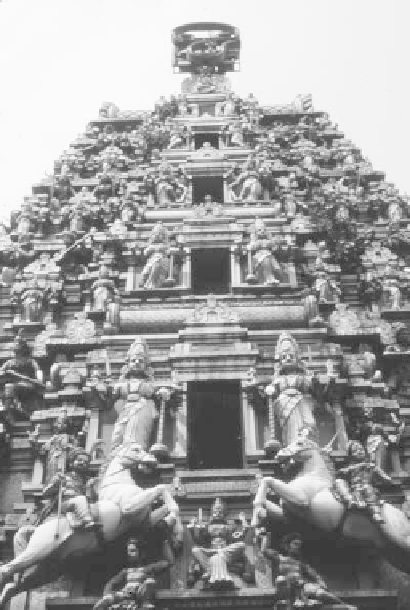Geography Reference
In-Depth Information
ralism is a historical construct. For example, in Malaysia
the British perceived the Malay as farmers unwilling to
do wage labor and the Chinese and Indians inherently
suited for mining and plantation work. Thus, Malays
were shoved to the margins of development by both
British practice and policy . As geographers Mark
Cleary and Brian Shaw (1994) observed: “Ethnic plu-
ralism in Malaysia might be more accurately repre-
sented as a series of overlapping Malay , Chinese or
Indian ethnic dimensions (language, business practice,
occupation, religion) rather than lines of rigid demar-
cation. They represent socially constructed rather than
'natural' difference.”
Just as economic and infrastructural factors were un-
balanced, so was population distribution. By the late
1960s, some 15 percent of the Malay population was
classified as urban. About 45 percent of Chinese and 35
percent of Indians were classified as urban. Malays in the
cities were heavily concentrated in government employ-
ment. Very few participated in the commercial and in-
dustrial sectors.
Modern development in Malaysia has been defined
by a New Economic Policy (NEP) and subsequent
“Malaysia Plans.” A fundamental goal of the NEP was to
restructure Malay society by raising incomes for all
groups and eliminating the association of ethnicity and
economic function. This meant an increase in the pro-
duction of export commodities such as timber and oil as
well as export-oriented industrialization. Explicit within
the NEP was the intention to create a Malay (
Bumiputera)
business community that would own or manage at least
30 percent of all these activities by 1990. This goal date
has been reset to 2020.
Even though most Malays are not as rich as Chinese
business people, they have seen major increases in pros-
perity over the past two decades. While the Chinese
dominate business in Kuala Lumpur and Pinang, estab-
lished Malay businessmen have become a major force in
many areas. Moreover, Malays dominate the government.
Government efforts to encourage
Bumiputera
entrepre-
neurs have spawned a lively and increasing influence of
Malay business at all levels of the economy .
Figure 16-3
Sri Mahamariamman, dating from 1873, is the oldest Hindu
temple in Kuala Lumpur . The Raja Gopuram (tower) was erected
in 1968 in South Indian Style. The gopuram is 75 feet (22.9 m)
tall.
Photograph courtesy of B. A. Weightman.
liver significant income, indigenous people clung to
those activities while outsiders involved themselves in
tobacco, pepper, and other new production enterprises.
Oil was very important in British North Borneo, where it
was the stable backbone of revenue.
Pre-colonial and colonial trading economies had be-
come intermeshed. Whatever the case, the focus was on
environmental exploitation. Native populations became
ever more marginalized as commodity trade increasingly
fulfilled the requirements of the growing world economy .
This heritage affects the developmental patterns of East
Malaysia and Brunei to this day .
THE RISE AND FALL OF ISLAMISM
Malaya' s headlong rush into development generated a
backlash among conservative Muslims. Consequently , in
2001, Islamists won political victories in two states: tin-
producing Kelantan and energy-rich but socially poor
T Terengganu. Fundamentalist officials imposed strict
ETHNICITY AND DEVELOPMENT
Malaysia has a plural society and development policies
have favored indigenous Malays. However, the relation-
ship between ethnicity and status is difficult to define as
there are not viable definitions of ethnicity . Ethnic plu-


















Search WWH ::

Custom Search